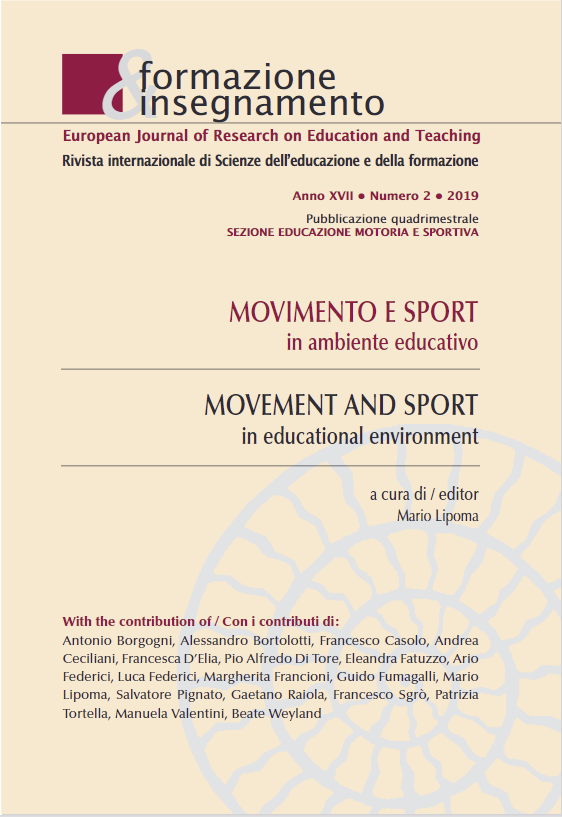Space representation and perceptual egocentrism
Abstract
This paper presents the results of a research on perspective taking, aimed to investigate two specific themes: the age when the child leaves perceptive egocentrism, and gender differences in the management of spatial reference systems. The innovative contribution of this work is that it has addressed the issue with a not abused tool for this field: the videogame, which has been the data collecting instrument for the experimental research project. The paper addresses the issue of the representation of space in the child, from Piaget to neurosciences, describing the reference systems competing in the representation of space and the Piagetian conceptual framework, and reporting the scientific debate on the "three mountains task" and the spatial theory of empathy. Once described the conceptual framework, the text presents the research design, the path for design and development of the videogame, the methods for data collection and discusses the results obtained. The experimental process has led to observe how the cognitive processes involved in space representation are processes also involved in the management of inter- subjective relationship modes. The age range 6-7 years and 12-13 years is the period in which the child learns the change of point of view, in the literal sense, and, in a broad sense, realizes that the world can not be seen one way, that space can be manipulated, that it is possible to consider the thoughts and emotions of others. It is the age in which the capacity for empathy develops, understood as the ability to see the world through the eyes of others.
Downloads
Published
How to Cite
Issue
Section
License
Copyright (c) 2019 Pensa MultiMedia

This work is licensed under a Creative Commons Attribution 4.0 International License.
Formazione & insegnamento is distributed under Attribution 4.0 International (CC BY 4.0).
For further details, please refer to our Repository & Archiving Policy, as well as our Copyright & Licensing Terms.





